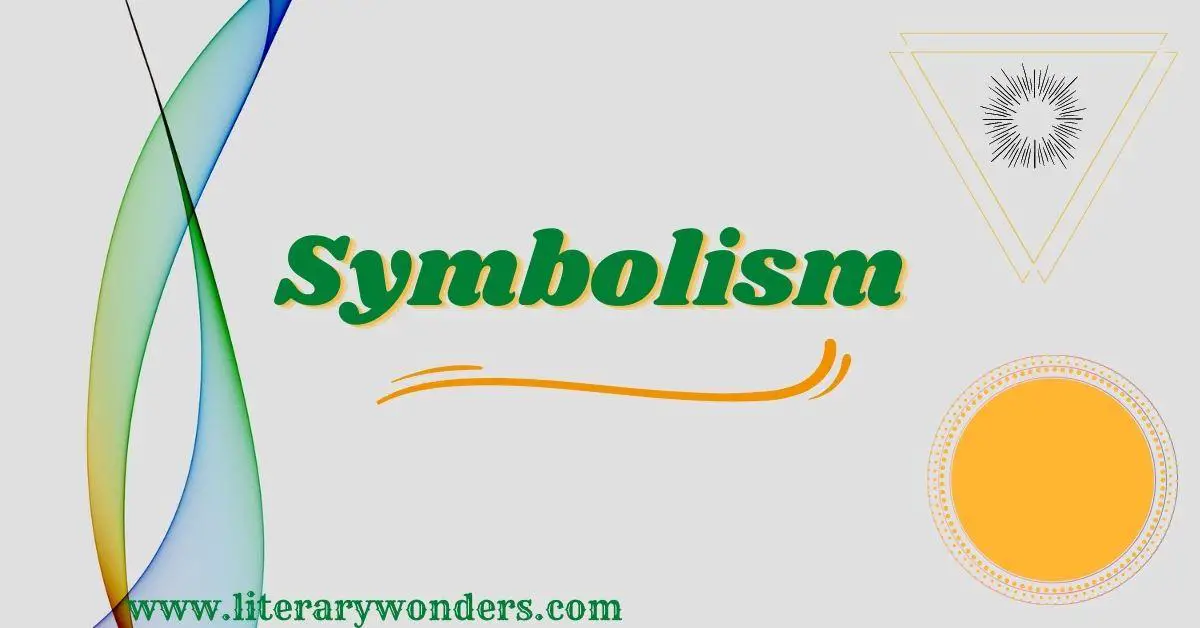Definition of Symbolism
Symbolism is a powerful literary tool that refers to the use of various symbols in academic work. A symbol is a word, sign, or mark that suggests something else; it signifies something beyond the literal meaning. In literature, it can be a concept, phrase, idea, action, or character that signals and manifests a series of additional significant meanings.
For example, in her poem, “The Imaginary Iceberg”, Elizabeth Bishop utilizes symbolism to indicate to the audience how imagination plays a pivotal role in life:
In the poem, the iceberg symbolizes the captivating imaginary world that takes us away from the ground realities of life. Whereas the ship stands for the realities of life, it makes us travel to distant lands and experience the severity of the weather. Surprisingly, the writer favors the glimmering giant ice block to exhibit how humans love to create and live in their imaginative world. Undoubtedly, it’s the symbolism of ship and iceberg that enhances the intended impact of the poem.
Common Examples of Symbolism
We live in a multicultural world, where words, concepts, and objects often carry more than one meaning. Below are some common examples of symbolism;
- Winter- symbolizes sadness and death.
- Spring- symbolizes happiness, excitement, and a fresh start in life
- Red rose- symbolizes love
- Lion and eagle- symbolizes strength and courage
- Colored ribbons- symbolize support for specific campaigns
- Darkness- represents fear, terror, and horror
- Symbolism Examples in Literature
Example#1
“The Magic Box” is a highly symbolic poem penned down by Kit Wright. In this poem, the speaker intends to have a magic box in which she desires to put strange things. However, everything she has planned to put carries a symbolic meaning, such as; “silk sari” symbolizes beauty and elegance, “a snowman” represents excitement and winter fun, and “bluest water from Lake Lucerne” symbolizes the mesmerizing beauty of nature. Similarly, “the first smile of a baby” stands for the extreme happiness one feels on the arrival of a new baby.
Example#2
Oliver Twist exhibits various symbols such as; the darkness that symbolizes crime, countryside, which represents happiness. Similarly, London Bridge stands for the collisions of two worlds. The above-stated stanza is taken from the opening chapter of the novel, which indicates the use of various symbols such as; lack of food supply symbolizes the corruption and injustice of the workhouse.
Example# 3
This extract from a famous play, Waiting for Godot, also display a brilliant use of symbolism. The play’s title holds a symbolic value; it refers to the people who spend their life waiting for a miracle. In the above-stated lines, “Eiffel Tower” stands for respect and glory, whereas the “boot” represents the acute present-day misery of the Estragon. No matter how hard he tries to get rid of the painful flight, he gets more trapped in it.
Usage of Symbolism in Movies
This helpful device is used and brilliantly displayed in movies by many film artists. In theatre, it connects the audience to the underlying meaning and purpose of the displayed script. Some famous examples of symbolism in movies are as follows;
- Birds symbolize hope and survival in Birdbox.
- Virus stands for death and destruction in Contagion.
- The Joker is a symbolism of terrorism in The Dark Night.
- Stone is a symbol of hope, wealth, and lust in Parasite.
See Also:

